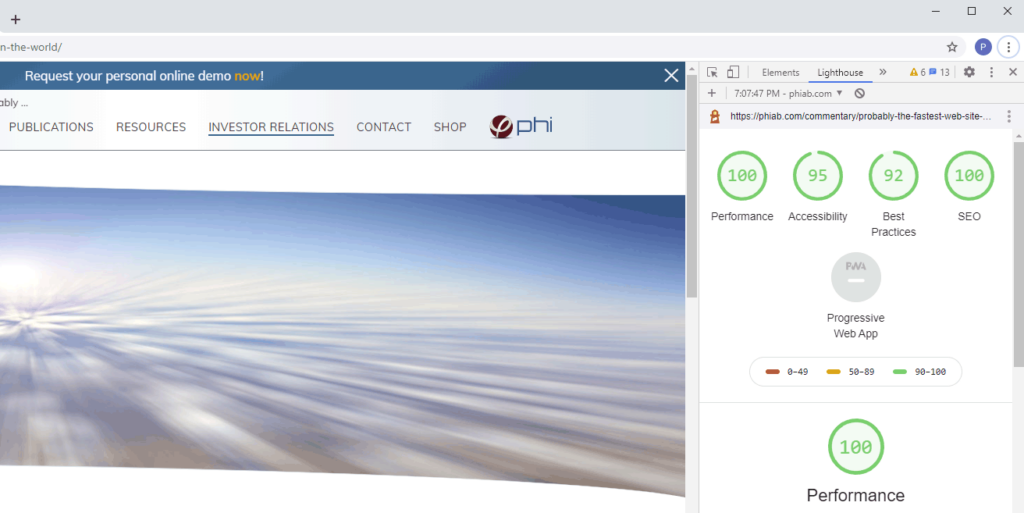
Probably
the fastest website in the world
Mälarhusen, September 2, 2020
The page you now are reading was probably displayed faster on your screen than any other web page you have read.
Tradeshows and physical meetings were until the outbreak the backbone of how businesses do business with businesses. Tradeshows were considered a must, not to lose market visibility and customer confidence. Most sales representatives considered the physical face to face meeting as holy and essential to close any form of significant deal.
Climate concerns have long motivated a change in our travel habits. The pandemic has shown to us that today’s online tools are a viable alternative to daily commuting and excessive business traveling. Since WHO declared COVID-19 a pandemic in March, doing business to business online is rapidly becoming the accepted norm. A physical meeting has become a luxury, which is saved until it is absolutely necessary.
To adapt to the rapidly changing business environment brought on by the pandemic, we at PHI have intensified our efforts to enhance our website ranking. Through its website ranking system, Google controls company revenues and how much a company pays for online advertisement. So, if Google tells you, as a company, to jump, you jump.
A few years ago, Google announced that slow websites will begin to receive a lower ranking. The consequence of this is that companies with sluggish websites are likely to see a reduction in sales, as their products will appear further down in the search results when shoppers “google” and browse.
Appropriate content is of course very important for the website ranking. But, to rule out that we do not falter by having a slow website, we set out to improve the response time of phiab.com during this past summer.
The initial optimization results exceeded our expectations by far. It turns out that phiab.com has gone from being an average website to probably be the fastest in the world, definitely in our industry. Additionally, the results below show that we can compete with any company in our industry in the new online business environment shaped by the pandemic.

Peter Egelberg
CEO and founder
Benchmarking Against the Fastest Websites in the World
The chart below was created by measuring performance of each site at least 3 times for both desktop and mobile, using the Google Lighthouse web page testing tool.
Lighthouse is readily accessible to all users of Google's web browser Chrome:
- Go to the web page you want to test
- Right-click on the page and select inspect
- Select the Lighthouse tab (you may need to press » to see it)
- Select Desktop or Mobile
- Click Generate report.
- To generate a new report, click ⦸ on the row above the small lighthouse icon.
- The results on apply for a specific page, not for an entire website.
- The results are computer-dependent and may vary significantly, especially the mobile results.
- The results are only comparable when performed on the same computer with no other applications running that consume computer resources.

Google Lighthouse test of this commentary.
Wikipedia vs. PHI
To break the tie between Wikipedia and PHI, the Live Cell Imaging pages of both sites were tested, en.wikipedia.org/wiki/Live_cell_imaging and phiab.com/holomonitor/live-cell-imaging respectively:
Wikipedia has the benefit of displaying a much smaller image. Images are resource-demanding and increase load time significantly. Additionally, Wikipedia uses a standard font, built into the browser. Like PHI, most websites use a non-standard “fancy” font that needs to be downloaded from the server, which increases load time.